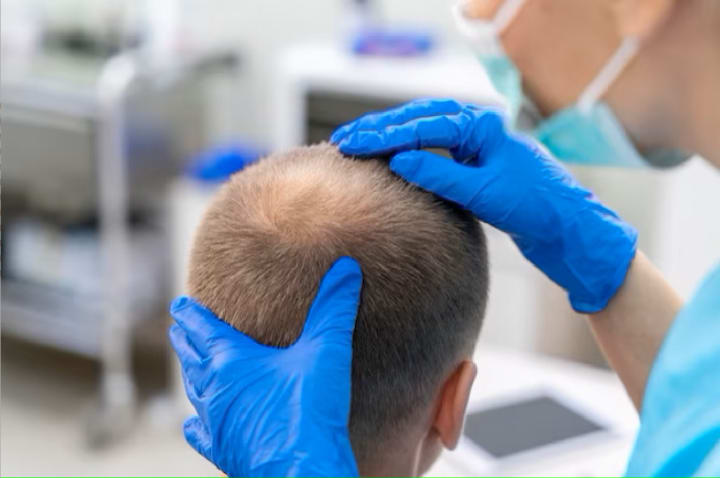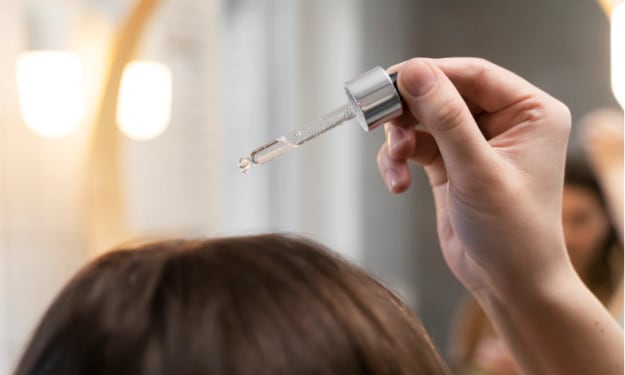How I Achieved My Dream Hair with a Hair Growth Calculator and Red Light Therapy
Gracie Smith

If you are like many people who want to grow their hair longer and healthier, you may have wondered how long it will take to reach your desired length. You may have also wondered how to measure your progress and adjust your expectations along the way. Fortunately, there is a simple tool that can help you with these questions: a hair growth calculator.
A hair growth calculator is an online tool that allows you to input some information about your current hair length, average monthly hair growth rate, and desired hair length, and get an estimate of how long it will take to achieve your goal. You can also use it to calculate how long your hair will be after a certain period of time, or how much time you need to grow a certain amount of hair.
A hair growth calculator can be useful for several reasons. First, it can help you set realistic and attainable goals for your hair journey. Second, it can help you plan your hair care routine and budget accordingly. Third, it can help you track your progress and celebrate your achievements.

How to Use a Hair Growth Calculator
Using a hair growth calculator is easy and fun. All you need is a measuring tape, a computer or smartphone, and an internet connection. Here are the steps to follow:
Measure your current hair length. You can do this by pulling a strand of hair from the front of your head and measuring it from the root to the tip. Alternatively, you can measure the length of your hair from the nape of your neck to the end of your longest layer. You can use inches or centimeters, depending on your preference.
Find out your average monthly hair growth rate. This is the amount of hair that grows on your scalp every month. The average hair growth rate is about 0.5 inches or 1.25 centimeters per month, but this can vary depending on factors such as genetics, age, sex, nutrition, health, and hair care practices. You can estimate your own hair growth rate by measuring your hair length at the beginning and end of a month and dividing the difference by the number of days in that month.
Decide on your desired hair length. This is the length that you want to achieve by the end of your hair journey. You can choose any length that suits your style and preference, from chin-length to waist-length or beyond.
Enter these information into a hair growth calculator. You can find many online tools that offer this service for free, such as [this one], [this one], or [this one]. They will ask you to input your current hair length, average monthly hair growth rate, and desired hair length, and then give you an estimate of how long it will take to reach your goal.
Interpret the results. The results will show you how many months or years you need to grow your hair to your desired length, or how long your hair will be after a certain period of time. You can also see how much hair you need to grow or cut to reach a specific length.
Tips and Tricks for Using a Hair Growth Calculator
While a hair growth calculator can be a helpful tool for planning your hair journey, it is important to remember that it is not very accurate or precise. It does not take into account other factors that may affect your hair growth, such as genetics, health, nutrition, stress, hormones, hair type, hair damage, and hair care practices. Therefore, you should use the results as a general guide and not as a definitive answer.
You should also measure your hair length and growth rate regularly and update them in the hair growth calculator to get more accurate results. You can use a calendar, a journal, or an app to keep track of your measurements and progress.
Additionally, you should take care of your hair and scalp by following some healthy habits and practices, such as:
- Eating a balanced diet that includes protein, iron, zinc, biotin, vitamin C, vitamin E, omega-3 fatty acids, and other nutrients that support healthy hair growth.
- Drinking plenty of water to hydrate your body and scalp.
- Exercising regularly to improve your blood circulation and oxygen delivery to your scalp and follicles.
- Managing your stress levels by practicing relaxation techniques such as meditation, yoga, breathing exercises, or hobbies.
- Massaging your scalp gently with your fingertips or a brush to stimulate blood flow and promote hair growth.
- Using natural oils such as coconut oil, olive oil, castor oil, or jojoba oil to nourish and moisturize your scalp and strands.
- Avoiding harsh chemicals such as sulfates, parabens, silicones, or alcohols that can strip your hair of its natural oils and moisture.
- Avoiding excessive heat styling such as blow-drying, curling, or straightening that can damage your hair cuticles and cause breakage and split ends.
Trimming your hair regularly to get rid of damaged ends and maintain a healthy shape.
Another option that you may want to consider to boost your hair growth and health is red light therapy. Red light therapy hair growth is a treatment that uses light-emitting diodes (LEDs) to deliver low-intensity red and near-infrared light deep into the body’s cells to promote healing. It is noninvasive, painless, and does not use heat.

Red light therapy works by activating the cell’s energy generators (mitochondria), which produce adenosine triphosphate (ATP), the molecule that helps your body store and use energy. Aging, illness, or lifestyle factors can make the mitochondria produce less ATP, which can affect your hair growth and quality. Red light therapy triggers a reaction that helps reverse this decline.
Red light therapy also increases blood flow (microcirculation) in the scalp and stimulates the metabolism in catagen or telogen follicles. The result is an accelerated production of anagen hair – new hair (stimulation of epidermal stem cells in the hair follicle bulge and shifting the follicles into anagen phase). Red light therapy can also reduce inflammation, improve circulation, enhance cellular repair, and increase collagen production.
Red light therapy has been proven by multiple studies to be effective for treating various types of hair loss, such as genetic, hormonal, stress-induced, or medication-induced. It can also improve the thickness, density, strength.
Have you tried best infrared light therapy devices for hair growth? What are your results? Share your story in the comments below!
About the Creator
Healthy Fun
After years of exploration, I believe that health is the secret to happiness.
Enjoyed the story? Support the Creator.
Subscribe for free to receive all their stories in your feed. You could also pledge your support or give them a one-off tip, letting them know you appreciate their work.






Comments
There are no comments for this story
Be the first to respond and start the conversation.